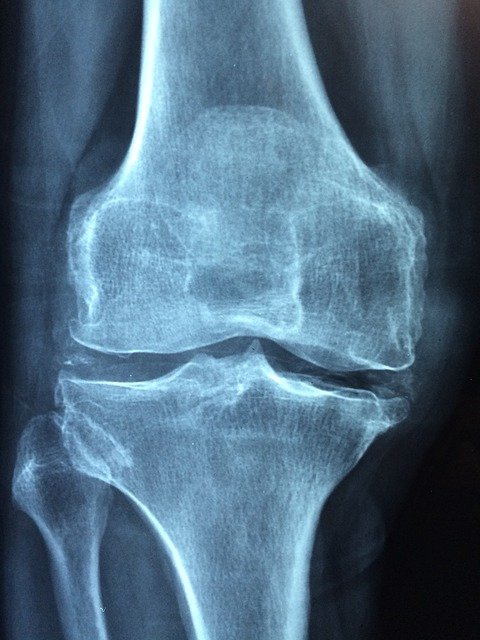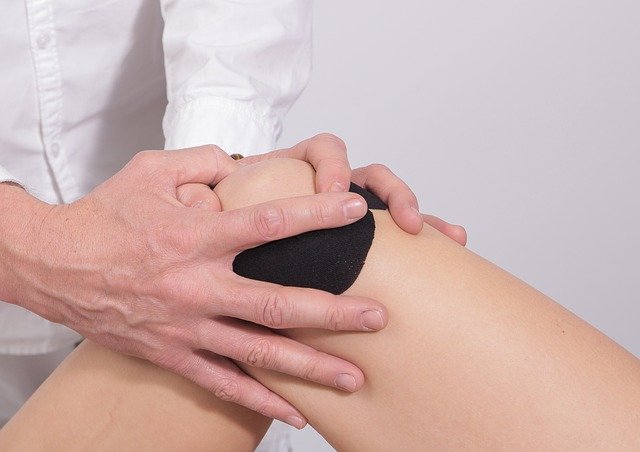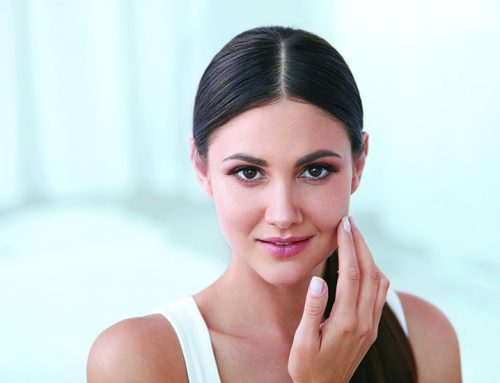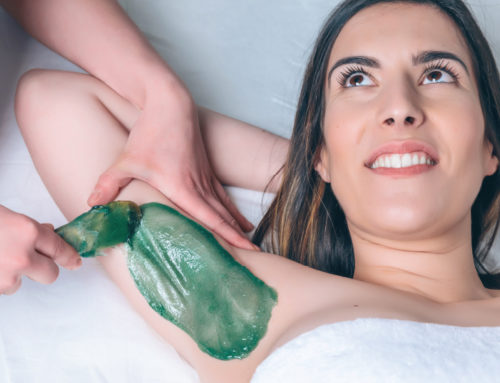
Osteoarthritis of the knee and what to do about it
Ever heard someone around you complain about a painful, swollen or stiff knee? You may have encountered your friends and/or family members bring up the subject of “osteoarthritis” and may also have started to wonder what the fuss is all about. So what is osteoarthritis exactly?
Osteoarthritis basically refers to damage to the cartilage and bone within a joint. The condition affects millions of people worldwide, and the knee is the most commonly affected joint. Overall, more than 20% of people above the age of 40 suffer from knee osteoarthritis. It affects women more than men, and those who are overweight are more likely to develop it. The condition also becomes more prevalent as we get older.
CAUSES AND SYMPTOMS OF OSTEOARTHRITIS
As you may know, the knee joint is made up of the confluence of the lower end of the femur (thigh bone), the upper end of the tibia (shin bone) and the knee cap (patella). The surfaces of the joint are covered by a smooth elastic tissue called cartilage. Cartilage allows the joint surfaces to glide smoothly and painlessly against each other. However, problems can arise when the cartilage at the joint surfaces is damaged, preventing the knee joint from functioning normally. Such damage is called osteoarthritis. It can result from degeneration (wear and tear), trauma (fractures and ligament injuries), avascular necrosis (depletion of the blood supply to the bone) and inflammatory disorders (such as rheumatoid arthritis).
Individuals who develop osteoarthritis may experience pain, stiffness and deformity in the knee. In severe cases, they may face difficulty walking and even start to limp. Osteoarthritis can therefore severely affect a patient’s everyday activities and quality of life. If you experience any of these symptoms, it is important that you seek orthopaedic care early.
TREATMENT OF OSTEOARTHRITIS
When you first see your orthopaedic surgeon for the condition, he/she will first ask questions relating to the location of the pain, as well as its onset, progression, severity and impact on daily activities. He/she will also review any relevant past medical problems. Following this, the surgeon will carry out a thorough physical examination. X-rays and MRI scans may be done to confirm the diagnosis. Occasionally, additional blood tests may be done to find out the underlying cause of the osteoarthritis.
In the early stages, knee pain caused by osteoarthritis is usually treated with simple measures, such as temporarily avoiding activities that intensify the pain, including walking and climbing stairs. Taking painkillers like non-steroidal anti-inflammatory drugs (NSAIDs) will also help to relieve pain, while applying an ice pack over the knee will aid in reducing swelling. In some cases, an injection of steroids into the knee may help to temper an acute flare of the osteoarthritis.
Subsequently, it is important to exercise regularly to preserve the range of motion in the knee and to strengthen the muscles in the thigh that control the knee. It may be helpful to see a physiotherapist who can supervise these exercises. If a patient is overweight, reducing weight is important to reduce the load borne by the knees.

Ever heard someone around you complain about a painful, swollen or stiff knee? You may have encountered your friends and/or family members bring up the subject of “osteoarthritis” and may also have started to wonder what the fuss is all about. So what is osteoarthritis exactly?
Osteoarthritis basically refers to damage to the cartilage and bone within a joint. The condition affects millions of people worldwide, and the knee is the most commonly affected joint. Overall, more than 20% of people above the age of 40 suffer from knee osteoarthritis. It affects women more than men, and those who are overweight are more likely to develop it. The condition also becomes more prevalent as we get older.
CAUSES AND SYMPTOMS OF OSTEOARTHRITIS
As you may know, the knee joint is made up of the confluence of the lower end of the femur (thigh bone), the upper end of the tibia (shin bone) and the knee cap (patella). The surfaces of the joint are covered by a smooth elastic tissue called cartilage. Cartilage allows the joint surfaces to glide smoothly and painlessly against each other. However, problems can arise when the cartilage at the joint surfaces is damaged, preventing the knee joint from functioning normally. Such damage is called osteoarthritis. It can result from degeneration (wear and tear), trauma (fractures and ligament injuries), avascular necrosis (depletion of the blood supply to the bone) and inflammatory disorders (such as rheumatoid arthritis).
Individuals who develop osteoarthritis may experience pain, stiffness and deformity in the knee. In severe cases, they may face difficulty walking and even start to limp. Osteoarthritis can therefore severely affect a patient’s everyday activities and quality of life. If you experience any of these symptoms, it is important that you seek orthopaedic care early.

TREATMENT OF OSTEOARTHRITIS
When you first see your orthopaedic surgeon for the condition, he/she will first ask questions relating to the location of the pain, as well as its onset, progression, severity and impact on daily activities. He/she will also review any relevant past medical problems. Following this, the surgeon will carry out a thorough physical examination. X-rays and MRI scans may be done to confirm the diagnosis. Occasionally, additional blood tests may be done to find out the underlying cause of the osteoarthritis.
In the early stages, knee pain caused by osteoarthritis is usually treated with simple measures, such as temporarily avoiding activities that intensify the pain, including walking and climbing stairs. Taking painkillers like non-steroidal anti-inflammatory drugs (NSAIDs) will also help to relieve pain, while applying an ice pack over the knee will aid in reducing swelling. In some cases, an injection of steroids into the knee may help to temper an acute flare of the osteoarthritis.
Subsequently, it is important to exercise regularly to preserve the range of motion in the knee and to strengthen the muscles in the thigh that control the knee. It may be helpful to see a physiotherapist who can supervise these exercises. If a patient is overweight, reducing weight is important to reduce the load borne by the knees.
THE NEED FOR SURGERY
However, if the symptoms are not adequately addressed by the above measures, surgery may be needed. When there are small areas of cartilage loss, arthroscopic or keyhole surgery may be used to repair the damage by stimulating the formation of new cartilage.
If there is extensive cartilage damage, more invasive surgery may be required. For individuals under the age of 50, an osteotomy (bone-reshaping surgery) can be used to improve the overall alignment and shape of the knee, especially when there is deformity or bowing of the knee. For individuals above the age of 50, knee replacement surgery may be needed to address the condition. In this procedure, the worn-out surfaces of the knee joint are trimmed away and replaced with prosthetic components which are made of cobalt-chromium, titanium and polyethylene (medical grade plastic).
Surgery for knee osteoarthritis is usually performed under general anaesthesia and may take about 1-2 hours to complete. The patient is generally able to start walking on the day of the surgery. A short stay in hospital is usually required after the surgery, and a variable period of walking aid-assisted ambulation, ranging from 2-6 weeks, may be advised.
“Individuals who develop osteoarthritis may experience pain, stiffness and deformity in the knee. In severe cases, they may face difficulty walking and even start to limp. Osteoarthritis can therefore severely affect a patient’s everyday activities and quality of life.”
The rehabilitation process after the surgery is generally supervised by a physiotherapist, and consists of a progressive range of motion exercises, muscle strengthening exercises and functional therapy.
In summary, you should not allow osteoarthritis to bring you to your knees. There are currently many effective treatment options available to help you get back to an active lifestyle. Do not hesitate to seek help!

Senior Consultant Orthopaedic Surgeon
Orthopaedic and Hand Surgery Partners
Dr Lingaraj is currently Senior Consultant Orthopaedic Surgeon at Orthopaedic and Hand Surgery Partners at Gleneagles Hospital. He is concurrently Director of the Sports Centre at the National University Hospital (NUH), where he also serves as Head of the Division of Sports Medicine and Surgery, and Visiting Consultant in the Department of Orthopaedic Surgery. He served on the Executive Board of Sport Singapore from 2016-2020. Dr Lingaraj has published more than 40 peer-reviewed scientific articles, and has been involved in more than 70 conference presentations. He has also been widely featured in the media. Dr Lingaraj firmly believes in providing holistic, comprehensive, evidence-based care for all his patients. He has practised medicine for more than 20 years, and manages a wide-range of orthopaedic conditions. His subspecialty interests lie in the fields of knee surgery and orthopaedic sports medicine, where he is recognised as a thought-leader nationally and internationally.









